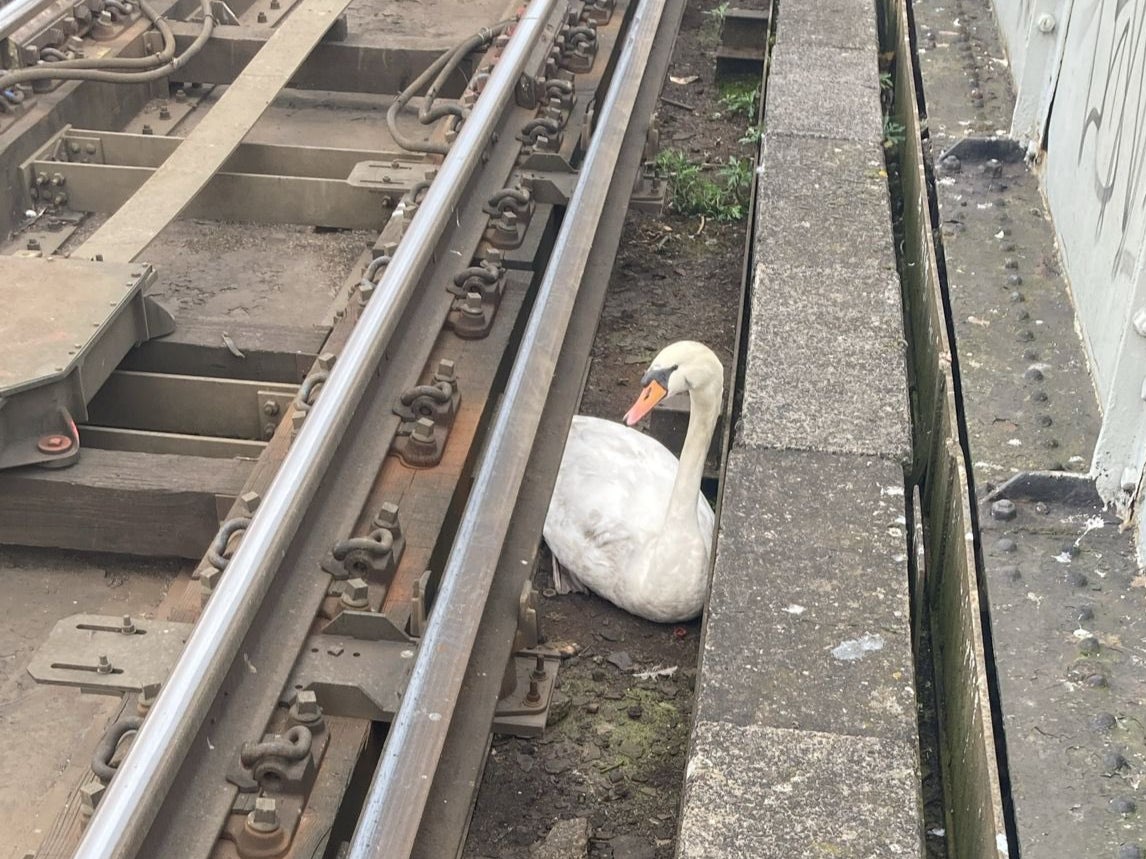Rail staff are being taught how to safely remove swans who sneak onto train tracks potentially severely delaying journeys and putting themselves in danger.
Network Rail has revealed that they have partnered up with The Swan Sanctuary, a charity dedicated to the care and treatment of swans across the UK, to learn how to safely remove the trespassing birds from the railway and release them back into the wild.
There have been at least 143 swan incidents where these elegant birds have invaded the train tracks across the country in the 2023 to 2024 period, Network Rail says.
This places the swans at around sixth place in the list of the top 10 railway trespassers – but the birds barely compete with those who took the top spot with around 19,300 trespassing incidents this period: humans.
The Swan Sanctuary is providing training to some of Network Rail’s mobile operational managers, which help look after railways, on how to safely remove the birds from the train tracks.
As part of the training, the managers receive specialist hands-on training with swans, and by doing so, learn how to correctly and safely restrain the swans and transport them away from the railway tracks, Network Rail said.
However, this comes with its challenges, as in some places, the railway carries 750 volts of electricity, making bird removal a tricky task.

Tom Desmond, an operations director from Network Rail, said that, despite deer being the largest group of railway trespassers out of the animal kingdom, swans are, in fact, “the most impactful animal trespassers for disrupting passenger services”.
“Our partnership with the Swan Sanctuary provides our front-line teams with invaluable skills and training to tackle the challenge of quickly and safely removing our feathered friends from the railway,” he added.
While Network Rail has found that humans are by far the worst offenders of track trespassing, with one incident every half an hour, deer come in second place with 349 incidents over the year.
Deer tend to live in high numbers across rural, forested areas, commonly found adjacent to a lot of railway lines.
Their population has increased significantly over the past few decades, with an estimated two million deer living across…
Click Here to Read the Full Original Article at The Independent Travel…
